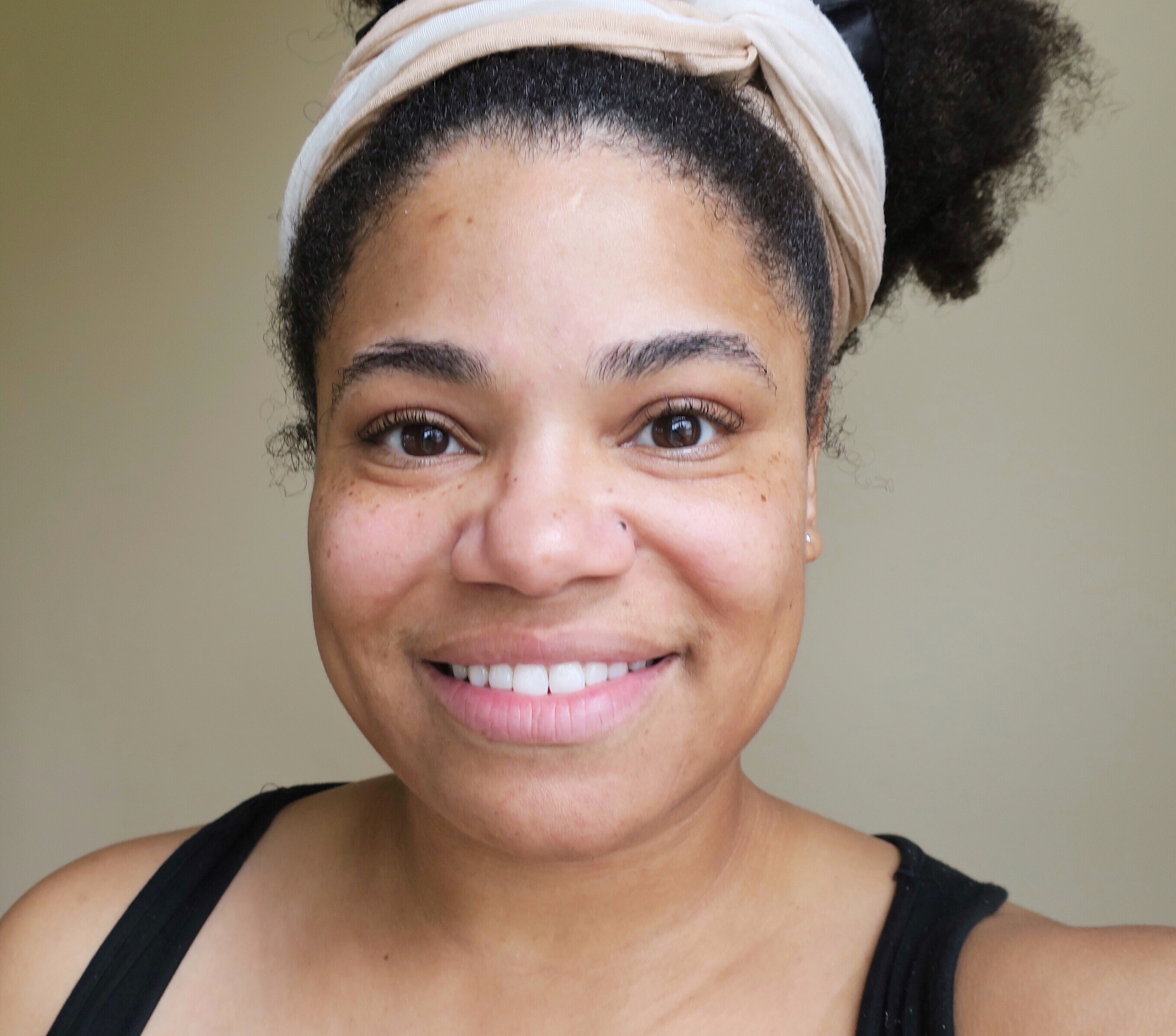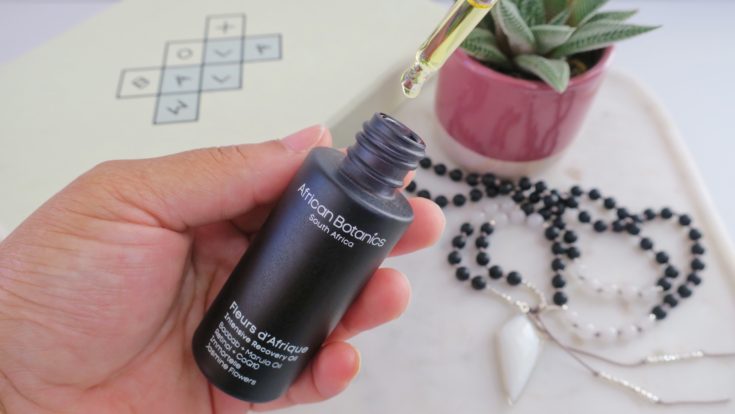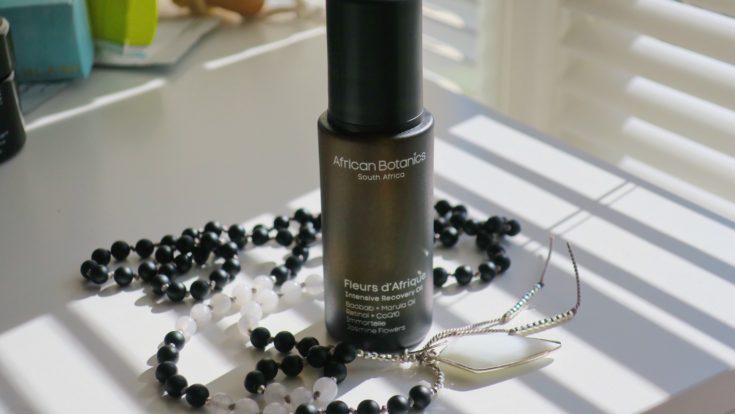
Hi friends. Hope you’re having a fantastic start to your week. We’ve been cooped up with loads of thunderstorms, and there is apparently another week of rain ahead. Since I’ve got some extra time on my hands I’ve decided to knock out a few posts that have been sitting in the queue for a while. Today I want to talk about Retinol in green beauty and breastfeeding.
Lately, I’ve been getting a lot of questions about Retinol. The rise in questions has been two-fold: on the one hand, many of you want to know if Retinol products are truly non-toxic. On the other hand, many of you know that I’m a breastfeeding mother and you want to know whether (or why) I’m incorporating Retinol into my skincare routine.
So let’s just get right to it.
First of all, the standard disclaimer seems appropriate here. While I often provide general information and discussion about medicine and health, the content provided on my blog, and in any linked materials, is not intended and should not be construed as medical advice. **Upon further research this post has been updated to include additional information on the safety (it is) of natural retinol**
Retinol in Green Beauty

Something happens when a woman hits her mid-30s. All of a sudden the focus in skincare shifts. I think it has something to do with the media telling us that women should look forever young, while men get to age gracefully. Or perhaps we simply want to erase the remnants of a youth lived foolishly. C’mon, you know nobody could tell 20-something you to wear sunblock every day. Either way, in our 30s we seem to slowly begin to focus on products that promise to restore our youthful glow.
Enter Retinol. If you’re looking for the fountain of youth in skincare you really don’t have to look much further than Retinol. And rightfully so, it is a powerhouse ingredient.
For those that don’t know, Retinol is the alcohol form of the vitamin A molecule. It’s revered for its ability to boost collagen (bye fine lines); increase cellular turnover; dissolve oil (making pores appear tighter and smoother), and even gradually even skin tone and fade dark spots. But, Retinoids, including Retinol, are also shrouded in controversy. This is in large part because of the oral medication Accutane, the most commonly known Retinoid, and it’s connection to birth defects and liver toxicity. In the 90’s it seemed everyone was using it, and it really gave the whole category a bad name.
But you must understand two things: first, oral retinoids and topical retinoids have different outcomes; and second, topical retinol has come a long (long long) way.
Topical Retinol vs Oral Isotretinoin
Understand this: there is a considerable difference between topical retinol and isotretinoin (Accutane).
Namely, topical retinol does not influence cell-cycle progression, cellular differentiation, cell survival, and apoptosis the way that Accutane does. This is why Accutane is so effective at the systemic treatment of acne. It penetrates your entire system and reduces the amount of sebum produced. So, since topical retinol is not systemic (aka not absorbed into all of your cells) it doesn’t present the same level of concern for toxicity.
Topical retinol works in a number of ways to improve the look of skin and reduce the appearance of aging. But what it does not do is enter the bloodstream or cause negative health outcomes (for mother or baby).
Frankly, our skin metabolizes it too quickly. So, worry less about any negative side effects of using a topical retinol and worry more about using a Natural, Clean, non-toxic topical retinol.
Clean, non-toxic Retinol

Some green beauty enthusiasts avoid Retinol products altogether because they tend to be stabilized with preservatives like parabens and Butylated hydroxytoluene (BHT). As you know, parabens are on the toxic ten list, and BHT is rated poorly by the EWG (BHT is commonly used in food preservation.BHT is commonly used in food preservation to prevent oils from oxidizing but is being researched for evidence of carcinogenicity. So, better safe than sorry.
Many green beauty brands are starting to address these concerns by producing clean retinol products. This means no parabens, no BHT, and only the highest quality plant-based vitamin A derivatives.
One example is the Tata Harper Retinoic Nutrient Face Oil (which I haven’t tried, but has great reviews). The Tata Harper retinol is made with naturally occurring retinoic acid extracted from rosehips. Another example that I have tried, and love, is the African Botanic Fleurs D’Afrique Intense Recovery Oil (pictured above) which I reviewed HERE. It’s a vegetable-based liposomal retinol preserved with rosemary extract, and it’s about as clean as you can expect.
*** EDITED TO ADD: Since this writing, I’ve tried another great clean non-toxic retinol that’d I’d recommend. The Wabi-Sabi Age Gracefully Targeted Treatment Serum, is made with potent ingredients including Cacay Oil, which is a highly potent natural retinol. I review it here. ***
Retinol and the breastfeeding mom

So this is why we’re here. The prevailing recommendation, operating out of an abundance of caution, is that you should not use retinol while pregnant. But here’s the thing, there is no significant research to show that the use of topical retinol causes birth defects.
The fear surrounding Retinol use is actually an artifact of two conflated issues: one, the association of birth defects with Accutane (a synthetic retinol) and the fact that there are a few isolated studies that point towards developmental abnormalities associated with excess vitamin A consumption during the 1st trimester of pregnancy. Frankly, I think the recommendation should be that you a) don’t take Accutane or any synthetic retinol (it’s toxic) and b) you should remain within the daily recommended allowance for oral vitamin A, 700-900μg (2300-4300 IU); both of which you can adhere to while using a natural, non-toxic, retinol such as rosehip seed oil or cacay oil.
I’ll say it again, I am not your healthcare provider. Yes, I’ve got a research and healthcare background. Yes, I’ve done a ton of research on this topic. But at the end of the day, I cannot tell you what you should do with your body. What I can do is tell you what I choose to do with mine.
A personal choice
For me, the research outweighs the misunderstanding surrounding this wonder ingredient. So yes, I am currently nursing a (night weaned) 17-month-old little girl and using non-toxic, naturally derived retinol.
Just to be 100% clear, oral retinoids are still a no-no while breastfeeding, but because topical retinol is unlikely to have negative effects to the baby, I feel comfortable using it as a short-term skincare addition. To be honest, postpartum is about the only time I need a Retinol, go figure. I’m not acne prone… except when carrying my husband’s super greasy babies. So, I blame him. Giving myself a little retinol protocol for a few months to help with prenatal acne scars and hyperpigmentation is a game changer for me.
For more information about safe drug use (over the counter or otherwise), while breastfeeding, the best resource out there is Medications and Mothers’ Milk by Dr. Hale, Ph.D. This is one of the primary guides used in the medical field on the topic.
Keep Asking Questions
One of the interesting side effects of growing a following on social media is that you guys ask a LOT of questions. Like a lot. Pair that with my own love of research and you get a gnarly feedback loop. On the one hand, I love that you all appreciate my effort to share evidence-based content. On the other hand, it certainly slows down the process of getting good content out there.
But I’m willing to do the work because I truly believe that asking questions will change the game. Asking me is great; but be sure you are also asking yourselves, your doctors, and most importantly the brands who are making money off of your choices. Your dollar is your most important commodity when it comes to influencing what products are available. So, if we all ask more questions, and pay a little more attention to where we spend our hard earned benjamins, there is going to be a shift. That means more accessible high-quality non-toxic products for all. 🙌🏽
I’m excited to do the work. And I’m excited you’re here to join me.
Resources I use often:
- The National Center for Biotechnology Information
- The Environmental Working Group
- Skin Deep: the EWG’s cosmetic database
- Pub Med & PubChem
- The World Health Organization
- The Think Dirty App
Xo, Kimberly Fe'Lix
